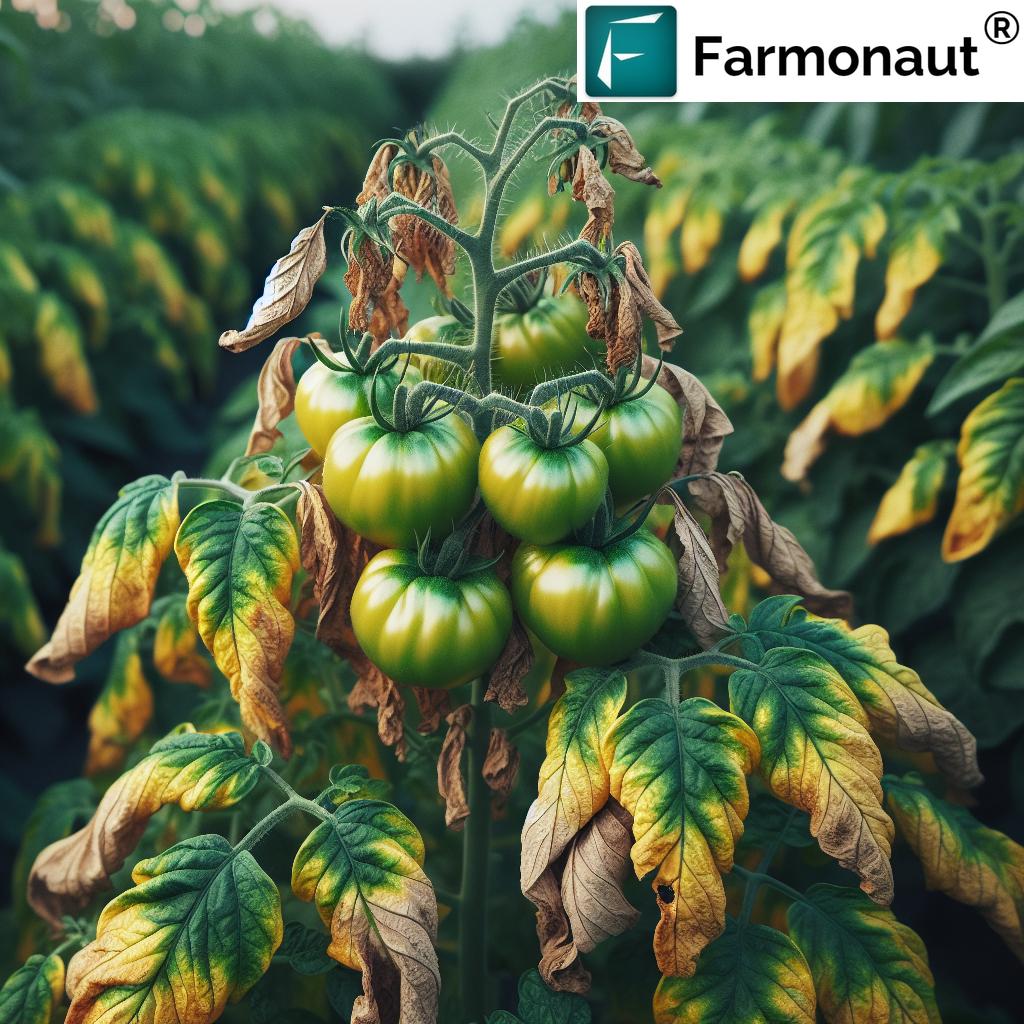Mono Potassium Phosphate: Essential Fertilizer Trends 2026 – Sustainability, Crop Yield & Modern Agriculture
Introduction
In the face of increasing global food demand and mounting challenges posed by climate change, the agricultural sector is rapidly evolving. Sustainable, precision-oriented, and efficient crop nutrition has become more important than ever as we approach 2026 and beyond. Among the essential fertilizers driving this transformation is mono potassium phosphate (commonly referred to as MKP), a phosphorus and potassium fertilizer famed for its high solubility, precise nutrient delivery, and remarkable influence on plant growth and yield.
As modern agriculture leans into technology and sustainability, understanding how monopotassium phosphate fertilizer underpins optimal crop development, supports balanced nutrient management, and elevates environmental stewardship is critical. In this comprehensive blog, we explore the fertilizer trends for 2026, the science and use of MKP, and how it seamlessly aligns with precision farming, sustainability, and technological innovation—including how solutions like Farmonaut can help maximize its impact.
What is Mono Potassium Phosphate?
Mono potassium phosphate (KH2PO4), also known as monopotassium phosphate fertilizer or MKP, is a highly soluble compound that supplies phosphorus and potassium in forms readily available to plants. As a white crystalline salt, it’s distinct in that it delivers both P and K simultaneously, meeting the dual requirement of key nutrients critical for plant growth, development, and yield.
- Phosphorus (P): Vital for root growth, energy transfer (as ATP), and flowering, making it indispensable for early crop development.
- Potassium (K): Essential for enzyme activation, disease resistance, water regulation, and quality of harvests.
Mono potassium phosphate fertilizer typically contains ~52% phosphorus pentoxide (P2O5), and ~34% potash (K2O). This makes MKP the ideal source for precision feeding in crops that require both phosphorus and potassium at specific growth stages—something that traditional potassium sulphate fertilizer (K2SO4) simply cannot offer on its own.
Key Technical Features of MKP:
- Chemical formula: KH2PO4
- Nutrient content: ~52% P2O5 (phosphorus pentoxide), ~34% K2O (potash)
- Water solubility: Highly soluble, enables fertigation and foliar application
- Chloride-free: Ideal for sensitive crops (e.g., fruit, horticulture), unlike some common potassium fertilizers
- pH: Slightly acidic (~4.5), aiding nutrient availability in alkaline soils
This dual-nutrient compound thus emerged as a cutting-edge input in contemporary agriculture, powering both traditional and high-value crops, fruits, and intensive farming systems.
Mono Potassium Phosphate in Modern Agriculture: Why 2026 Will Be a Turning Point
As agriculture accelerates toward sustainable intensification, the role of phosphorus and potassium fertilizer—especially as MKP—will witness significant evolution from 2025 into 2026 and beyond.
Why? Because fertilizer application is no longer about maximizing quantity alone. Efficiency, environmental impact, crop quality, and resilience to abiotic stress are the new benchmarks.
- Climate Change Challenges: More frequent droughts, erratic rainfall, and soil nutrient depletion all demand efficient nutrient management.
- Precision Requirements: Both large-scale and smallholder farmers are adopting precision agriculture systems utilizing satellite, AI, and data integration—to apply the right fertilizer, at the right time, in the right dose.
- Environmental Concerns: Runoff, eutrophication, and looming regulations (e.g., regional fertilizer bans) steer growers to balanced, targeted, and highly soluble solutions.
- Rising Input Costs: Cost-effective, high-efficiency inputs like monopotassium phosphate fertilizer can improve returns per hectare while reducing waste.
With the expanding application of MKP in fertigation, foliar feeding, and controlled-environment farming, the world is shifting toward a new era of fertilizer use where every input is measured, tracked, and optimized for yield, sustainability, and environmental protection.
Advantages and Fertilizer Trends: Why MKP is the Essential Fertilizer of 2026
-
Balanced Nutrient Supply:
MKP provides both P and K in a single application. This dual capability simplifies fertilization regimes and ensures that crops receive both crucial nutrients simultaneously, which is particularly important during critical phases like root establishment, flowering, and fruit setting.
-
High Solubility and Mobility:
The highly soluble nature of monopotassium phosphate fertilizer means rapid nutrient absorption by plants, excellent for modern fertigation systems and precise foliar application. This not only supports precision agriculture but also reduces fertilizer waste.
-
Enhanced Crop Quality, Yield, and Resistance:
Phosphorus boosts early root development and energy transfer (ATP formation), while potassium regulates water uptake, enzyme activation, and disease resistance. Trials have proven increased yield, better stress tolerance (resilience systems to drought, salinity, and disease), and higher crop quality, especially for fruits, vegetables, and high-value horticulture.
-
Compatibility with Other Fertilizers:
MKP can be combined with nitrogen fertilizers to form tailor-made NPK blends as per crop or region-specific requirements. In contrast, potassium sulphate fertilizer only adds sulphur and potassium, lacking the phosphorus for comprehensive nutrient management.
-
Environmental Stewardship:
The high efficiency and lower application rates of mono potassium phosphate reduce nutrient runoff, supporting climate-resilient, sustainable agriculture and compliance with new environmental regulations.
Comparative Trends Table: MKP vs. Traditional Fertilizers (2024–2026)
| Year | Fertilizer Type | Estimated Crop Yield Increase (%) | Water Use Efficiency Improvement (%) | Soil Health Impact | Environmental Footprint Reduction (%) |
|---|---|---|---|---|---|
| 2024 | Mono Potassium Phosphate | 12–17 | 10–13 | Positive | 13–15 |
| 2024 | Traditional Fertilizers | 7–10 | 5–7 | Neutral/Variable | 6–8 |
| 2025 | Mono Potassium Phosphate | 14–19 | 11–15 | Positive | 15–19 |
| 2025 | Traditional Fertilizers | 8–12 | 6–9 | Neutral/Variable | 7–10 |
| 2026 | Mono Potassium Phosphate | 16–22 | 14–19 | Positive | 18–25 |
| 2026 | Traditional Fertilizers | 9–13 | 7–10 | Neutral/Variable | 8–14 |
Key Insights: The estimated values highlight that mono potassium phosphate fertilizer consistently outperforms traditional options for yield, water efficiency, soil health, and reduced environmental footprint from 2024 through 2026. The trend toward MKP adoption supports precision management and makes it the ideal fertilizer for 2026 and beyond.
Phosphorus & Potassium: The Vital Nutrient Pair for Crop Success
Nitrogen, phosphorus, and potassium (NPK) form the nutrient triad at the foundation of modern fertilizer application principles. Here’s what makes phosphorus and potassium fertilizer unique, especially in the form of MKP:
- Phosphorus (P): Drives DNA synthesis, energy transfer (ATP), root system expansion, and early development in seedlings and young plants. It is critical during flowering, fruit set, and grain filling.
- Potassium (K): Powers metabolism, enzyme activation, water regulation (turgor management), and enhances disease resistance. Potassium’s role in photosynthesis and carbohydrate movement improves crop quality and taste.
MKP combines these strengths, helping to achieve balanced nutrition, sustained root health, enhanced resilience to biotic and abiotic stress (drought, salinity, cold), and higher productivity.
Top Applications: How MKP Fertilizer Powers Global Farming Systems
The utility of mono potassium phosphate transcends ordinary field crops. Its high solubility, compatibility, and chloride-free nature make it invaluable in:
- Horticulture (Fruits & Vegetables): MKP is the key fertilizer source for strawberries, tomatoes, citrus, grapes, and melons—crops where flowering, fruit quality, and disease resistance are direct contributors to market value.
- Viticulture: Precision potassium and phosphorus delivery during veraison enhances berry size, sugar accumulation, and color intensity for premium wine production.
- Greenhouse & Protected Crops: Consistent, precise nutrient feeding via fertigation systems or foliar feeding helps maximize yield under controlled environments, where soil solution management is critical.
- Forestry Nurseries & Plantation: Early stage root establishment is vital for sapling survival; MKP’s phosphorus supports aggressive root growth and seedling vigor.
- Row Crops (Maize, Wheat, Rice, Corn): Use of monopotassium phosphate fertilizer during key growth milestones enhances tillering, flowering, and seed set.
Interested in satellite-powered advisory for plantation, crop, or forest management? Learn more about Farmonaut’s Crop Plantation & Forestry Advisory tools for science-backed, location-specific recommendations.
Delivery Systems: Harnessing Solubility & Precision with MKP
Mono potassium phosphate fertilizer’s unique properties enable it to fit perfectly within modern agricultural systems focused on efficiency and sustainability:
- Fertigation: MKP’s high solubility allows it to be delivered directly via irrigation water, providing a precise, uniform, and timely application of nutrients.
- Foliar Feeding: When quick nutrient correction is needed during key growth moments (flowering, fruit set, stress recovery), MKP foliar sprays deliver phosphorus and potassium rapidly, minimizing risk of deficiency.
- Starter Fertilizer: Its rapid absorption suits young plants and seedlings, especially in challenging soils where phosphorus mobility is naturally low.
- Custom NPK Blends: By combining MKP with nitrogen sources, farmers can craft tailored nutrient solutions matching precise crop requirements and local soil conditions.
These delivery methods directly address issues of runoff, nutrient locking, and inefficient fertilizer use—making MKP a critical input as we move toward 2026.
For advanced resource management and traceability of all farm inputs (like MKP), check out Farmonaut’s Product Traceability platform. Traceability is essential to ensure responsible stewardship of nutrients and compliance with food safety standards globally.
Environmental & Economic Impact: Sustaining Growth for 2025 and Beyond
As the agriculture sector adapts to increasingly tight regulations and decides to prioritize sustainability, the advantages of MKP become even more pronounced.
- Reduced Application Rates = Lower Footprint: High nutrient concentration means smaller amounts needed per hectare, shrinking the logistics, storage costs, and waste typically associated with bulkier fertilizers.
- Lower Runoff and Leaching: Efficient and direct plant uptake curbs losses to air or water, crucial for regions vulnerable to nutrient runoff or environmental bans (e.g., around drinking water reservoirs, or lagoon areas facing algae blooms).
- Improved Soil Health: MKP is chloride-free and slightly acidic, so it doesn’t cause the sodium build-up or raise soil pH the way some alternatives might – making it better for long-term productivity and resilience of soil biota.
- Compliance with Regulations: With environmental compliance being strengthened in 2025–2026, using a balanced, efficient fertilizer like mono potassium phosphate supports proactive adaptation to new legislation.
For farmers and agri-businesses looking to demonstrate or monitor their environmental impact, Farmonaut’s Carbon Footprinting platform offers actionable satellite-powered data on emissions, input-use, and sustainability compliance.
Economic Impact: A Boon for Farmers in a Changing World
As input costs rise and margins tighten, the switch to efficient compound fertilizers like MKP minimizes operational costs per kg yield and supports:
- Smaller, targeted applications = direct labor savings
- Lower water demand per unit yield
- Reduced re-application frequency due to higher immediate uptake
- Protection of premium fruit/vegetable quality, ensuring market differentiation and better pricing
Did you know? Accurate, satellite-based verification of crop yield increase due to monopotassium phosphate application can help you access affordable crop loans and insurance. This minimizes financial risk and accelerates sustainable investment.
Farmonaut: Satellite-Powered Solutions for Sustainable Fertilizer Management
At Farmonaut, we recognize that maximizing fertilizer efficiency—especially for high-impact products like mono potassium phosphate—requires more than just the right input. It depends on timely, accurate, and actionable agricultural intelligence.
- Satellite-Based Monitoring: Our solution delivers real-time data on crop health, soil moisture, and vegetative indices (such as NDVI), empowering users to optimize their mkp and npk fertilizer applications to actual field needs and weather patterns.
- Jeevn AI Advisory System: With advanced AI-driven recommendations, growers get personalized, climate-smart insights on the best timing and rates for phosphate and potassium application.
- Blockchain-Based Traceability: Ensuring every batch, every monopotassium phosphate fertilizer application, and every harvest can be tracked, verified, and proven in the supply chain.
- Environmental Impact Tracking: Our platform helps users measure and reduce carbon footprints, making day-to-day operations more sustainable and compliant with forthcoming environmental regulations.
- API Integration: Businesses and developers can plug into our Farmonaut API and Developer Docs for seamless, scalable field management and decision-support.
- Fleet and Resource Management: For agri-businesses, tracking fleets and logistics around fertilizer use via satellite minimizes delay, reduces losses, and drives operational excellence. Learn about Fleet Management
With our full range of affordable, satellite-based tools and real-time analytics, we help farmers, businesses, and governments around the globe make the leap toward sustainable, precise, and data-driven fertilizer management for 2026 and beyond.
2030 Vision: The Evolving Role of Mono Potassium Phosphate Fertilizer
As the agricultural world transitions toward 2030, several trends are converging to make mono potassium phosphate fertilizer even more pivotal:
- Widespread Precision Farming Adoption: More farms globally will integrate satellite-driven field monitoring to optimize their MKP, NPK, and other fertilizer use.
- Smart Blends & Customized Inputs: Formulations tailored to region, crop, season, and anticipated stress factors (e.g., drought, saline soils) will become the norm, leveraging the customizability of MKP in various systems.
- Regenerative & Climate-Smart Agriculture: Focus on nutrient recycling, minimum waste, and input traceability to meet the world’s net-zero goals.
- Integrated Digital Platforms: Farmers will manage everything from soil mapping and real-time crop nutrition to input delivery, traceability, and insurance on unified applications (like ours), closing the loop between fertilizer application and market outcomes.
With these shifts, mono potassium phosphate will continue to be a vital, efficient, and sustainable solution for maximizing productivity and quality across crops and growing systems worldwide.
Farmonaut Subscriptions
Start your journey toward precision nutrient management, environmental monitoring, and smart farming with affordable Farmonaut subscription plans.
FAQ: Mono Potassium Phosphate Fertilizer for Sustainable, Modern Agriculture in 2026
What is mono potassium phosphate (MKP), and why is it different from common potassium sulphate fertilizer?
Mono potassium phosphate (KH2PO4) is a phosphorus and potassium fertilizer that is highly soluble and delivers both P and K in forms plants can use immediately. Unlike common potassium sulphate fertilizer, MKP also provides phosphorus, not just potassium. This dual nutrient supply is especially valuable during root development, flowering, and fruit set.
How does the high solubility of MKP benefit modern agriculture?
MKP’s high solubility means it can be used in fertigation and foliar feeding, enabling precise, efficient, and timely~ nutrient delivery. This helps reduce fertilizer waste, mitigates environmental runoff, and aligns with climate-smart farming.
Can I combine mono potassium phosphate fertilizer with nitrogen fertilizers?
Yes! MKP is physically and chemically compatible with many nitrogen sources, enabling the creation of custom NPK blends suited for specific crops, growth stages, or environmental conditions.
Which crops benefit the most from MKP application?
A wide array—fruits (strawberry, grape, citrus), vegetables, row crops (corn, wheat, rice), greenhouse and protected crops, and forestry nurseries all see gains in root vigor, yield, disease resistance, and quality when MKP is used appropriately.
Is mono potassium phosphate environmentally friendly?
Yes. Because of its high analysis (52% P2O5 + 34% K2O), it’s applied at lower rates, contains no chloride, and has a minimal environmental footprint compared to bulk alternatives—supporting both soil health and regulatory compliance.
How will fertilizer use trends shift in 2026?
Fertilizer trends will continue their move toward precision, digital integration, and sustainability. Mono potassium phosphate will be central to these shifts due to its efficiency, adaptability to modern farming systems, and ability to support environmental goals.
How can Farmonaut help me manage mono potassium phosphate fertilizer more efficiently?
We offer satellite-based field monitoring, AI-driven advisory, traceability, environmental monitoring, and API integration—all aimed at maximizing your yield, input efficiency, and sustainability when using MKP and other advanced fertilizers.
Where can I learn more or access Farmonaut’s satellite tools?
Download the Farmonaut app on the web, Android, or iOS; explore our API; or review our developer documentation to get started.
Conclusion: Mono Potassium Phosphate – The Future-Proof Fertilizer
Mono potassium phosphate fertilizer will remain a critical input as agriculture embraces environmental responsibility and digital precision in the run-up to 2026 and beyond. Its dual nutrient supply, unmatched solubility, and adaptability across conventional and high-value systems deliver both economic and ecological advantages.
Supported by technological advancements in satellite field monitoring, AI, and data-driven management (as we deliver at Farmonaut), MKP will continue to optimize yields, promote balanced development, and support global agriculture in meeting the increasing demand for food with lower environmental impact.
The journey toward a sustainable, high-yielding, and climate-resilient future is underway—and mono potassium phosphate stands at its heart.
Ready for the future? Optimize your fertilizer management with Farmonaut’s suite of satellite and AI solutions and realize the full potential of phosphorus and potassium, today and in 2026!











